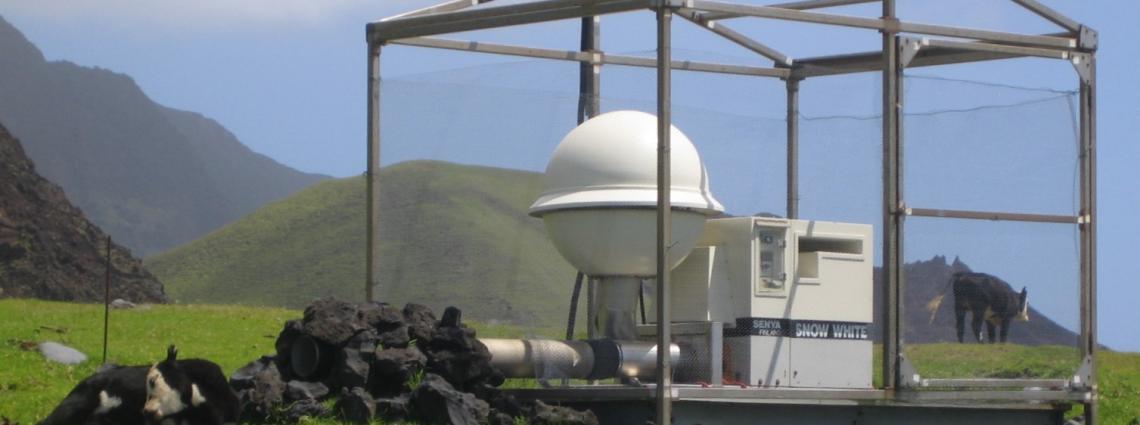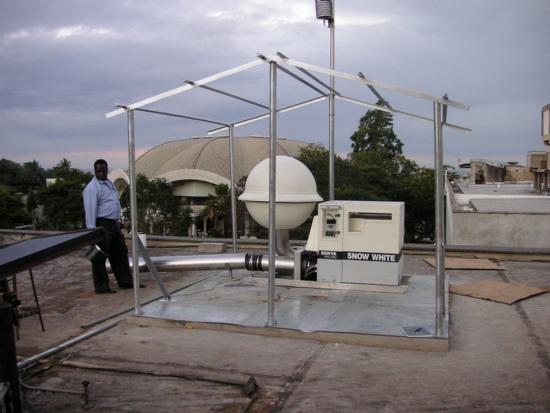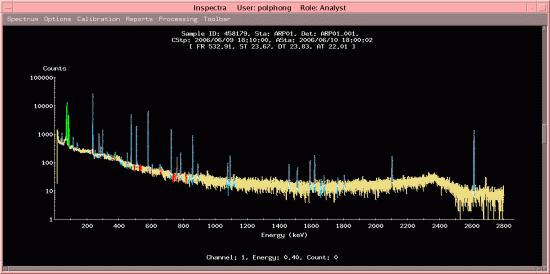Radionuclide data processing and analysis
Waveform data help identify the location of an event and qualify it as either natural or potentially of human origin. However, they cannot reliably answer the question of whether a non-natural event, such as an explosion, was nuclear or not.
The only reliable way to answer this question is to identify radioactive remains from a nuclear explosion that can provide the ultimate proof of the nuclear nature of an event: the ‘smoking gun’.
Radionuclide monitoring data from the 80 radionuclide monitoring stations worldwide can shed light on this key question. Data on radionuclide observations are sent to the International Data Centre (IDC) where they are analysed in a similar process to waveform data, with automatic analysis followed by an interactive review in which human analysts examine and refine the results.
Each radionuclide particulate monitoring station sends one gamma ray spectrum per day. A gamma ray spectrum is a two-dimensional plot showing which radionuclides were observed in a single sample, and in what quantity.
During radioactive decay, most radionuclides emit a very specific quantity of energy, which can take the form of alpha, beta or gamma radiation. As the energy of gamma radiation is known for each isotope’s radioactive decay process, measuring gamma radiation allows the conclusive identification of an isotope in the spectrum.
This is shown along the horizontal axis of the spectrum, where radionuclides in the measured sample are identified by the energy of their gamma ray emission. The vertical value in the plot stands for the count rate of detected radiation and, thus, determines the quantity of each radioactive substance in the sample.
This entire process is automatic and its results are listed in the Automatic Radionuclide Report (ARR). Radionuclide analysts in the IDC review these reports and take corrective measures when needed. Their review results in the Reviewed Radionuclide Report (RRR).
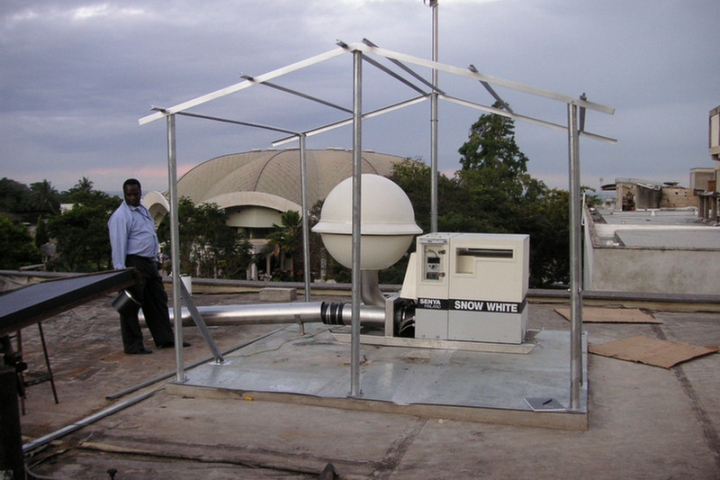
Data from 80 radionuclide station are sent to the IDC for further analysis. Radionuclide Station RN64, Dar es Salaam, Tanzania
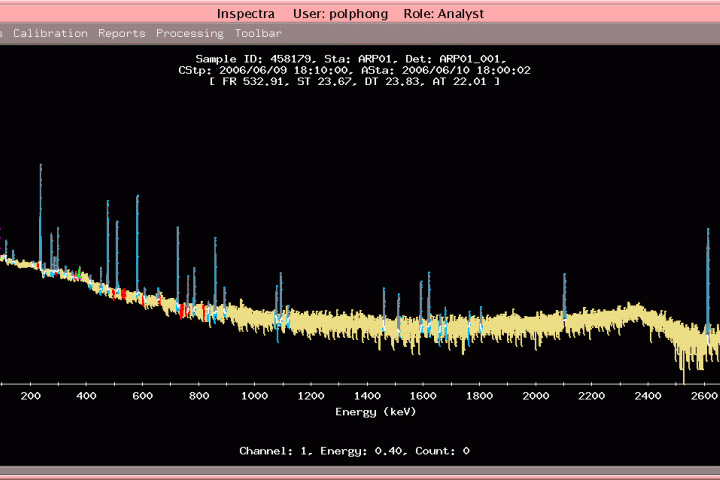
Example of a gamma ray spectrum. Each radionuclide station send one spectrum per day to the IDC.
Automatic radionuclide event screening
It is known which radionuclides occur naturally or are anthropogenic (produced by human activity), and which are generated during a nuclear explosion. The quantities and ratios in which these elements are produced during such an explosion are also known. Based on this knowledge, and with the results derived from the radiation spectra, States Parties can determine whether the sample suggests that a nuclear explosion has indeed taken place.
To filter the results, samples are categorized in five groups according to the identified radionuclides. Radionuclides in the first two category groups are radioactive substances originating from natural sources.
Category 3 radionuclides are radioactive isotopes that do not occur naturally and are known to be observed typically at certain stations. These include emissions from the regular civilian application of nuclear technology, such as in nuclear power plants and hospitals. For example, some monitoring stations in Europe still measure radionuclides that can be traced back to the accident at the Chornobyl nuclear power plant in 1986.
Samples in categories 4 and 5 contain radionuclides that are relevant for CTBT verification purposes, and these are considered more carefully in the analysis process. Of those two, level 5 detections demand immediate attention as they may contain multiple specific radionuclides generated by a nuclear explosion.
A level 5 sample is therefore automatically sent to two of the 16 radionuclide laboratories for further analysis. While the initial analysis at station level takes only 24 hours, the specialized laboratories perform a very thorough review with highly specialized equipment that can take seven days.
The radionuclide screening process focuses on the concentrations of observed relevant radionuclides. These are radionuclides that are specific to nuclear explosions, comprising those from nuclear fission itself plus those resulting from, for example, interaction of neutrons emitted during the explosion with the surrounding material.
The relative quantities of different isotopes detected in a sample analysis can provide information about the time of an explosion and possibly about the environment in which the explosion took place, i.e. under water, in the air or underground.
The findings of the screening process are presented in the Standard Screened Radionuclide Event Bulletin (SSREB). This report, along with raw data and the other reports, are made available to Member States to enable them to make a final judgement on the findings.

Number of detections of categories 4 (yellow) and 5 (red) radionuclides in 2007.
Radionuclide noble gases
In addition to monitoring for radioactive particles, half of the radionuclide stations are being equipped with noble gas monitoring technology. These isotopes are highly volatile and likely to be released even from underground explosions, where radionuclide particles are generally contained. The systems currently under experimental testing can measure certain radioisotopes of the noble gas xenon.
Some monitoring stations with noble gas technology employ the same detection method as that used by radionuclide particulate stations, and send gamma ray spectra of daily measured samples. Other stations use a different method of measuring the radionuclide noble gases contained in a sample by looking at the combined beta and gamma radiation.
Event categorization of noble gas samples is a highly demanding task, since some civilian sources may produce radioactive xenon in concentrations close to nuclear weapons test specifics. Work is continuing to advance the event categorization of noble gas findings.
Since 2008, an initiative funded by the European Union has been under way to improve understanding of the global radioxenon background and provide empirical data for validating the calibration and performance of the IMS verification system. The project is operating two transportable noble gas systems in Horonobe and Mutsu, Japan, with the aim of developing ways to better identify the source of frequent radioxenon detections at the Takasaki radionuclide station. These methods will then be applied to all radionuclide monitoring stations to improve their ability to identify a radioxenon signal that could indicate a nuclear test.
